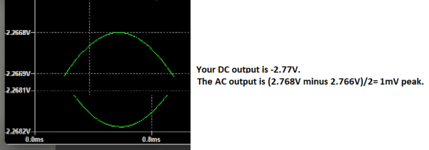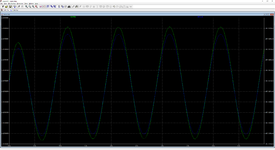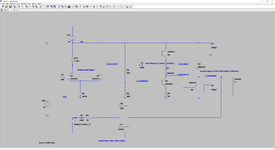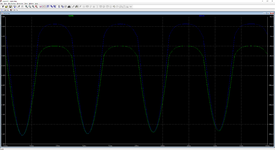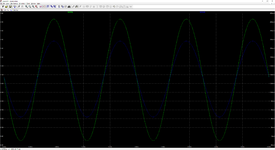Xerxsea
Junior Member level 1
Hello, I've been trying to learn how transistor amplifiers work and have been trying to build one based off of a EE class assignment I found off the internet,
As per the specifications:
On the Differential Stage I set the resistors to provide 9.3v on the output and have 500uA going through the tail resistor.
I then set The Resistors in the Transistor Current Source to also fit all the specifications:
• IBIAS2 ≈ 20mA • IDIV ≈ 1.8mA (with Q5 disconnected) • VDIV ≈ 1.7V across R4
However the output of the amplifier is actually less than what goes, it attenuates the signal. I don't understand what I did wrong but my electronics knowledge is very limited so maybe I misunderstood some of the specifications that were made in determining the resistor values.
My output is -2.26v which is less than the 100mv p-p signal I started with.
Is this expected behavior and I'm misunderstanding the results? I noticed (20v-2.26v) * 0.283A (Rload Current) I get 5 Watts what is exactly what the amp should be outputting. But That -2.26v reading is in reference to ground, As is the signal generator. So that cant be.


As per the specifications:
On the Differential Stage I set the resistors to provide 9.3v on the output and have 500uA going through the tail resistor.
I then set The Resistors in the Transistor Current Source to also fit all the specifications:
• IBIAS2 ≈ 20mA • IDIV ≈ 1.8mA (with Q5 disconnected) • VDIV ≈ 1.7V across R4
However the output of the amplifier is actually less than what goes, it attenuates the signal. I don't understand what I did wrong but my electronics knowledge is very limited so maybe I misunderstood some of the specifications that were made in determining the resistor values.
My output is -2.26v which is less than the 100mv p-p signal I started with.
Is this expected behavior and I'm misunderstanding the results? I noticed (20v-2.26v) * 0.283A (Rload Current) I get 5 Watts what is exactly what the amp should be outputting. But That -2.26v reading is in reference to ground, As is the signal generator. So that cant be.
Last edited:
